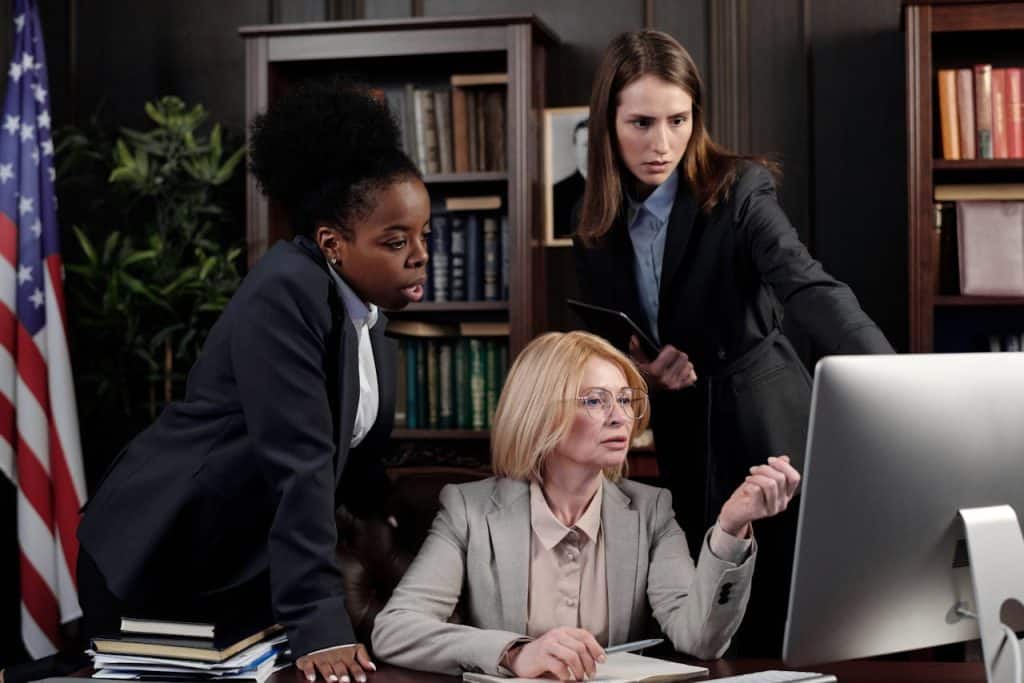The Power of Challenge Coins in Diplomacy
Challenge coins have long been symbols of honor, recognition, and unity within various organizations, particularly the military. However, their use has expanded significantly into the realm of diplomatic relations and global affairs. These small tokens, often intricately designed and carrying significant symbolic value, serve as powerful tools in fostering international relationships, recognizing contributions to diplomacy, and commemorating significant events. This article explores how challenge coins play a strategic role in diplomatic relations and global affairs, detailing their history, significance, and the impact they have on fostering cooperation and goodwill.
1. The Origins of Challenge Coins in Diplomacy
Military Roots and Early Diplomatic Use
The tradition of challenge coins began in the military, where they were used to build camaraderie and recognize achievements. Over time, the symbolic power of these coins was recognized in diplomatic circles, where they began to be used as tokens of goodwill and symbols of mutual respect between nations.
Example: Military leaders and diplomats would exchange challenge coins during joint operations and peacekeeping missions, symbolizing trust and cooperation between allied forces.
Adoption by Diplomatic Missions
Diplomatic missions soon adopted the practice of using challenge coins as part of their protocol. These coins become valuable tools for building relationships, expressing gratitude, and commemorating diplomatic milestones.
Example: An ambassador might present a challenge coin to a visiting dignitary to recognize their efforts in fostering bilateral relations, symbolizing a gesture of friendship and respect.
2. The Role of Challenge Coins in Diplomatic Relations
Building Trust and Cooperation
Challenge coins play a crucial role in building trust and cooperation between nations. These tokens are often exchanged during diplomatic meetings and events, serving as symbols of mutual respect and commitment to shared goals.
Example: During a summit between two countries, the heads of state might exchange challenge coins featuring their respective national symbols, reinforcing their commitment to working together on global issues.
Recognizing Contributions to Diplomacy
Challenge coins are used to recognize individuals who have made significant contributions to diplomacy and international relations. These tokens honor the efforts of diplomats, negotiators, and other key players in the field.
Example: A diplomat who has successfully brokered a peace agreement might receive a challenge coin from their government, acknowledging their critical role in achieving a diplomatic breakthrough.
Commemorating Diplomatic Events and Milestones
Challenge coins are often created to commemorate important diplomatic events and milestones, such as state visits, treaty signings, and international conferences. These coins serve as lasting reminders of the significance of these occasions.
Example: A challenge coin might be issued to commemorate the signing of a landmark trade agreement, featuring imagery that represents the economic benefits and partnership between the involved nations.
3. Designing Challenge Coins for Diplomatic Purposes
Conceptualization and Theme
The design process for diplomatic challenge coins begins with conceptualizing a theme that aligns with the mission and values of the diplomatic mission. The theme should resonate with the recipients and reflect the goals of the diplomatic engagement.
Tips:
- Purpose: Define the primary purpose of the coin, whether it’s to build relationships, recognize contributions, or commemorate events.
- Audience: Consider the interests and values of the target audience to create a design that appeals to them.
- Message: Ensure the coin’s design communicates the intended message clearly and effectively.
Example: A challenge coin for a peacekeeping mission might feature a theme centered around unity and cooperation, with symbols like olive branches, doves, and flags of the involved nations.
Incorporating Symbolism and Imagery
Symbolism and imagery are crucial elements in the design of diplomatic challenge coins. Each element should carry specific meanings and enhance the overall message of the coin.
Example: A challenge coin designed for a bilateral trade summit might include images of national landmarks, flags, and symbols of commerce, representing the partnership and economic goals of the event.
Choosing Colors and Materials
The choice of colors and materials can significantly impact the coin’s visual appeal and perceived value. Use colors that align with the nations’ branding and materials that reflect the coin’s significance.
Example: A silver-plated coin with vibrant enamel colors can add a touch of elegance and prestige, making it more appealing to potential recipients.
Personalization and Customization
Adding personalized elements, such as the recipient’s name or a specific event date, can make the coins more special and increase their value to recipients.
Example: A custom challenge coin presented to a visiting dignitary might include the dignitary’s name and the date of their visit, making it a cherished personal memento.
4. Effective Uses of Challenge Coins in Diplomatic Relations
Exchanging Coins During Diplomatic Visits
One of the most effective uses of challenge coins in diplomacy is during diplomatic visits. Exchanging coins can break the ice and serve as a gesture of goodwill, setting a positive tone for discussions.
Example: During a state visit, the host country’s foreign minister might present a challenge coin to the visiting delegation, symbolizing a warm welcome and the desire for fruitful negotiations.
Recognizing Diplomatic Achievements
Challenge coins are used to recognize significant diplomatic achievements, such as successful negotiations, peace agreements, and contributions to international organizations.
Example: An ambassador who has played a key role in securing a multilateral treaty might receive a challenge coin from their government, acknowledging their efforts and success.
Commemorating International Conferences and Summits
Challenge coins can be used to commemorate international conferences and summits, serving as lasting reminders of the collaborative efforts and outcomes of these events.
Example: A challenge coin might be issued for attendees of a global climate summit, featuring symbols of sustainability and cooperation, commemorating the collective efforts to address climate change.
5. Real-World Success Stories
U.S. Department of State
The U.S. Department of State has successfully used challenge coins to recognize the efforts of diplomats and foster international relations. By creating unique designs that resonate with their mission, the Department has engaged global partners and raised awareness for their diplomatic initiatives.
Example: The U.S. Department of State issues challenge coins to diplomats who demonstrate exceptional service in advancing U.S. foreign policy goals, highlighting their critical role in fostering international cooperation.
United Nations
The United Nations (UN) has utilized challenge coins to commemorate significant events and recognize contributions to international peace and security. These coins serve as tokens of appreciation and reminders of the UN’s mission to promote global harmony.
Example: The UN issued a series of challenge coins to commemorate the 75th anniversary of its founding, each featuring unique designs that reflect the organization’s history and achievements in promoting peace and development.
European Union
The European Union (EU) has used challenge coins in their diplomatic engagements to build relationships and recognize contributions to European integration and cooperation. These coins help celebrate milestones and foster a sense of unity among member states.
Example: The EU issued challenge coins to commemorate the signing of the Lisbon Treaty, featuring symbols of unity and cooperation that represent the collective efforts of the member states to enhance European governance.
6. Marketing and Promoting Challenge Coins in Diplomatic Relations
Social Media Campaigns
Leverage social media platforms to promote challenge coins and engage with a global audience. Use compelling visuals and stories to highlight the significance of the coins and the impact of the diplomatic initiatives they represent.
Tips:
- Visual Content: Share high-quality images and videos of the challenge coins, showcasing their design and significance.
- Storytelling: Tell stories of individuals and events that have been impacted by the diplomatic efforts, and how the coins symbolize goodwill and cooperation.
- Hashtags: Use relevant hashtags to increase visibility and reach, such as #ChallengeCoins, #Diplomacy, and #GlobalAffairs.
Example: A diplomatic mission might launch a social media campaign featuring testimonials from diplomats and partners, creating an emotional connection with the global audience.
Email Campaigns
Send targeted emails to diplomatic contacts, highlighting the significance of the challenge coins and the diplomatic initiatives they represent. Include compelling calls to action to encourage engagement and participation.
Example: An email campaign might include stories of how diplomatic efforts have made a difference, with a call to action to share the message and promote the use of challenge coins in fostering international relations.
Events and Diplomatic Receptions
Promote the challenge coins at diplomatic events and receptions, creating opportunities for diplomats and dignitaries to receive them as tokens of appreciation. Use these events to highlight the mission and impact of the diplomatic initiatives.
Example: A diplomatic reception might feature a presentation of challenge coins to visiting dignitaries, reinforcing the importance of the bilateral relationship and the commitment to ongoing cooperation.
Collaborations and Partnerships
Collaborate with international organizations, NGOs, and other diplomatic missions to promote the challenge coins and reach a wider audience. Partnerships can help amplify the message and attract new supporters.
Example: A diplomatic mission might partner with an international NGO to promote the use of challenge coins in recognizing contributions to global humanitarian efforts, increasing visibility and engagement.
7. Measuring and Evaluating Success
Tracking Diplomatic Goals
It’s essential to track the impact of the challenge coins in achieving diplomatic goals. Use metrics such as the number of coins distributed, engagement levels, and feedback from recipients to evaluate success.
Example: A diplomatic mission might set up a dashboard to monitor the distribution of challenge coins and their impact on fostering relationships and achieving diplomatic milestones.
Gathering Feedback
Collect feedback from diplomats, dignitaries, and other recipients to understand their experience and identify areas for improvement. Use surveys, interviews, and social media interactions to gather valuable insights.
Example: After a diplomatic event, an organization could send a survey to attendees asking about their satisfaction with the challenge coins and their perceived value in fostering diplomatic relations.
Adjusting Strategies
Based on the feedback and data collected, adjust strategies for future diplomatic engagements. Continuously improve the design, distribution, and promotion of challenge coins to maximize their impact.
Example: If diplomats express a preference for more personalized coins, an organization might incorporate customization options in future campaigns to enhance appeal.
8. The Future of Challenge Coins in Diplomatic Relations
Embracing Digital Technologies
As technology advances, digital elements can be incorporated into challenge coins to enhance their appeal and functionality. Consider adding QR codes or NFC chips that link to exclusive content or interactive experiences.
Example: A challenge coin with an embedded QR code might link to a video message from a head of state, providing a personal touch and deeper connection with the recipient.
Expanding Use Across Diplomatic Sectors
The use of challenge coins is likely to expand across various diplomatic sectors, with more organizations recognizing their potential in fostering international relations and promoting goodwill.
Example: International trade organizations, environmental groups, and cultural exchange programs might increasingly use challenge coins to engage global partners and recognize contributions to their missions.
Sustainability and Ethical Sourcing
As awareness of environmental and ethical issues grows, diplomatic missions should consider the sustainability and ethical sourcing of materials used in challenge coins.
Example: A diplomatic mission might choose to work with manufacturers that use recycled materials and fair labor practices, aligning their diplomatic efforts with their commitment to global sustainability.
The Strategic Role of Challenge Coins in Diplomatic Relations
Challenge coins are powerful tools for fostering diplomatic relations and promoting international cooperation. By leveraging their symbolic value, personalization, and storytelling potential, diplomatic missions can create impactful tokens that resonate with global partners and foster a sense of goodwill.
As we have explored, the design and implementation of challenge coins in diplomatic relations require careful planning and execution. From conceptualizing meaningful designs to promoting their significance, each step plays a crucial role in the success of diplomatic initiatives.
Looking ahead, the use of challenge coins in diplomacy is poised to grow, with new technologies and approaches enhancing their effectiveness. By embracing these opportunities and staying true to their mission, diplomatic missions can harness the power of challenge coins to make a lasting impact and drive positive change in global affairs.
If you are interested in high-quality custom made challenge coins, you can fill out one of our FREE quote forms or call us at 800-335-2403.



